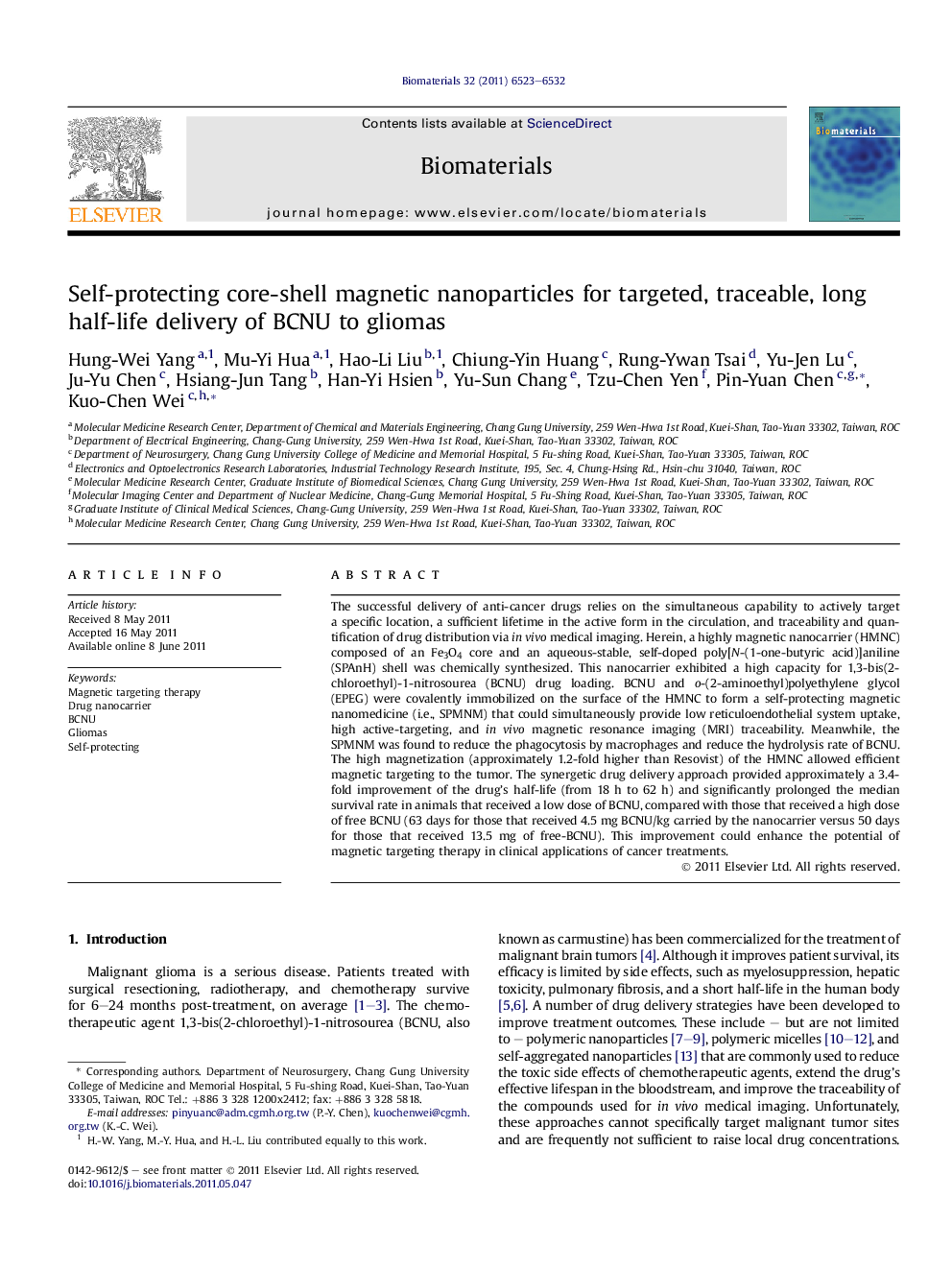| Article ID | Journal | Published Year | Pages | File Type |
|---|---|---|---|---|
| 10229581 | Biomaterials | 2011 | 10 Pages |
Abstract
The successful delivery of anti-cancer drugs relies on the simultaneous capability to actively target a specific location, a sufficient lifetime in the active form in the circulation, and traceability and quantification of drug distribution via in vivo medical imaging. Herein, a highly magnetic nanocarrier (HMNC) composed of an Fe3O4 core and an aqueous-stable, self-doped poly[N-(1-one-butyric acid)]aniline (SPAnH) shell was chemically synthesized. This nanocarrier exhibited a high capacity for 1,3-bis(2-chloroethyl)-1-nitrosourea (BCNU) drug loading. BCNU and o-(2-aminoethyl)polyethylene glycol (EPEG) were covalently immobilized on the surface of the HMNC to form a self-protecting magnetic nanomedicine (i.e., SPMNM) that could simultaneously provide low reticuloendothelial system uptake, high active-targeting, and in vivo magnetic resonance imaging (MRI) traceability. Meanwhile, the SPMNM was found to reduce the phagocytosis by macrophages and reduce the hydrolysis rate of BCNU. The high magnetization (approximately 1.2-fold higher than Resovist) of the HMNC allowed efficient magnetic targeting to the tumor. The synergetic drug delivery approach provided approximately a 3.4-fold improvement of the drug's half-life (from 18 h to 62 h) and significantly prolonged the median survival rate in animals that received a low dose of BCNU, compared with those that received a high dose of free BCNU (63 days for those that received 4.5 mg BCNU/kg carried by the nanocarrier versus 50 days for those that received 13.5 mg of free-BCNU). This improvement could enhance the potential of magnetic targeting therapy in clinical applications of cancer treatments.
Keywords
Related Topics
Physical Sciences and Engineering
Chemical Engineering
Bioengineering
Authors
Hung-Wei Yang, Mu-Yi Hua, Hao-Li Liu, Chiung-Yin Huang, Rung-Ywan Tsai, Yu-Jen Lu, Ju-Yu Chen, Hsiang-Jun Tang, Han-Yi Hsien, Yu-Sun Chang, Tzu-Chen Yen, Pin-Yuan Chen, Kuo-Chen Wei,
